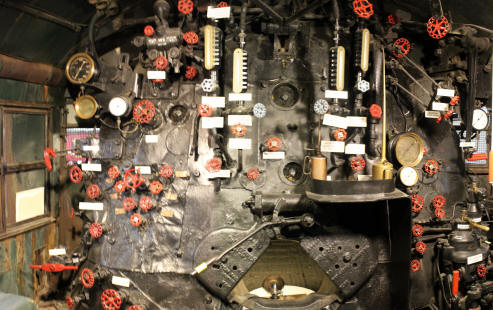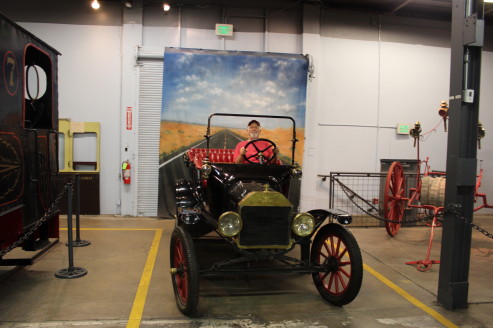
Me and my model T.
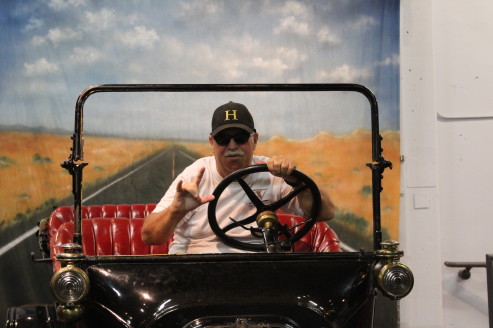
Ricky racer flying through the prairies.
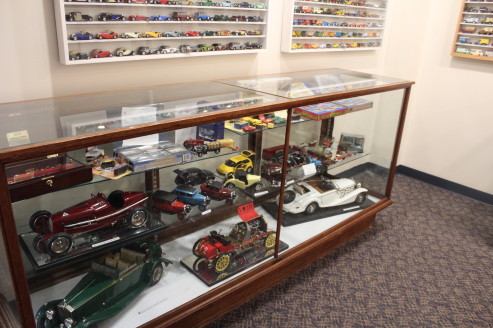
A few of several display cases in the gift shop.
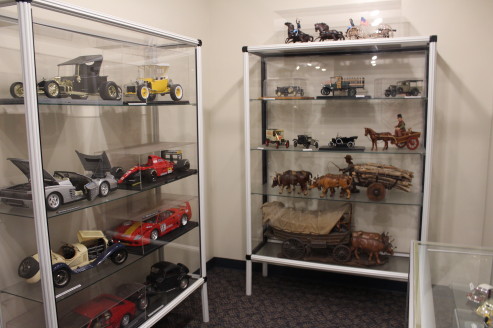
Chris and I would like to thank the staff of Forney for making
our visit possible.
From Denver we traveled east on I-76 to our next stop at Fort
Morgan.
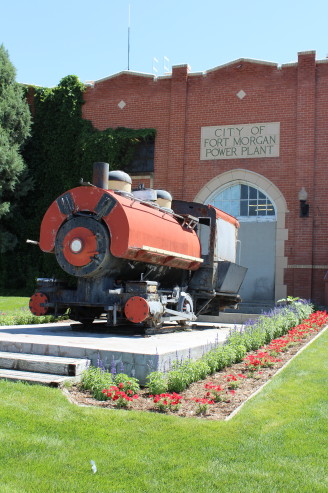
Riverside Park Power Plant, # 2176, 0-4-0T built 1930,
standard gauge.
Fort Morgan was the
childhood home of musician and band leader, Glenn Miller. In
late June the Dancin' on the Plains festival pays tribute to
Miller and his contributions to swing music.
The present city grew out
of a military post that was established on the South Platte
River in 1864 to protect travelers from hostile Native
Americans. It later became a station on the Overland Trail
from the Missouri River to Denver.
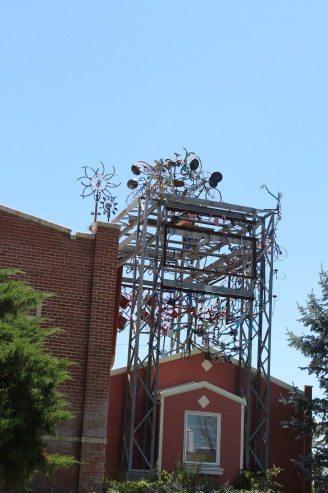
Community art work or listing station for UFO's?
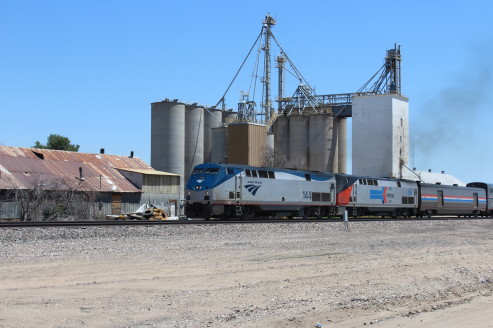
Amtrak's California Zephyr west bound train #5 at Fort Morgan
and a little bit tardy. Schedule time here is 5:05am and it is
leaving at noon today.
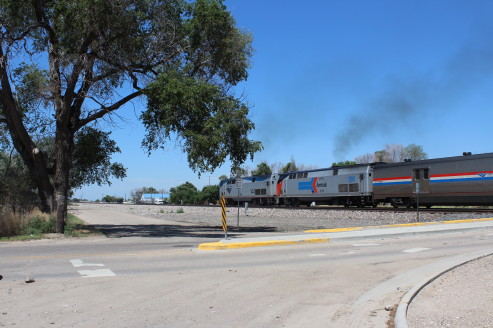
# 5 heading west to Denver and then finishing in California.
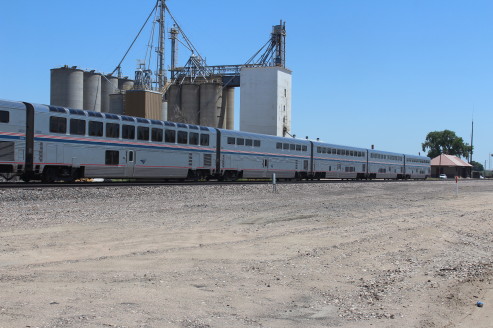
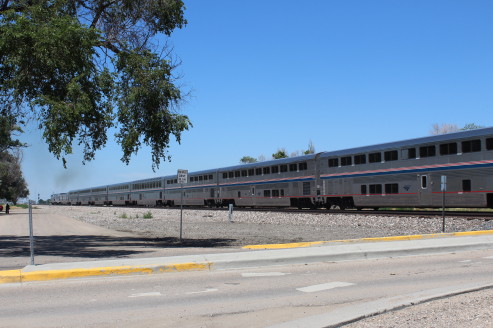
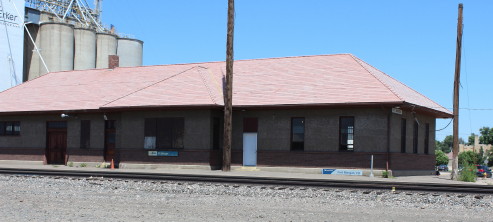
CB & Q Fort Morgan Station.
Continuing east on I-76 we reached our next stop.
Sterling
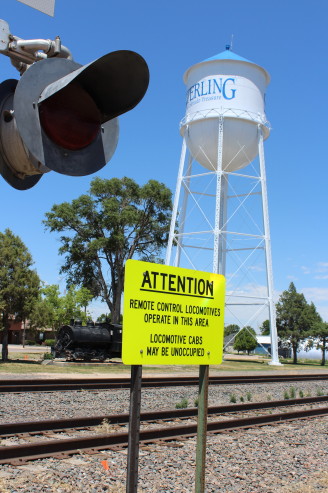
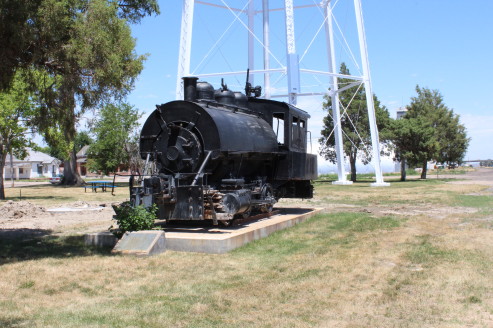
Great Western 2121, 0-4-0T, built 1928, standard gauge.
Union Pacific Sterling station.
Continuing east about 45 miles is our next stop.
Ovid
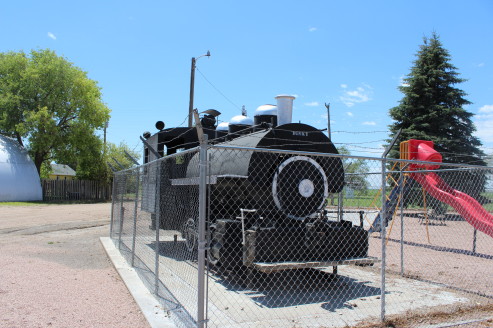
In Ovid's City park on Main Street, we find a Great Western
0-4-0T, 2150, built in 1929, standard gauge.
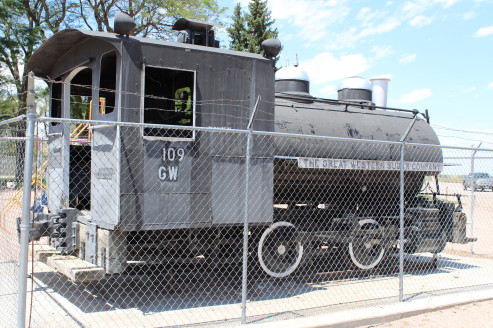
GW 109
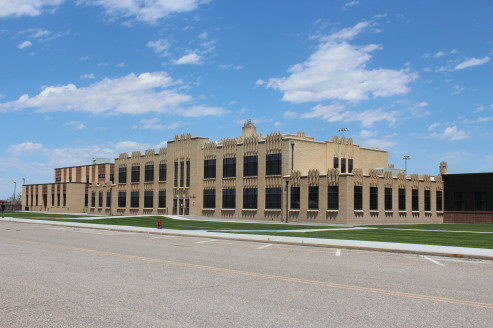
Across Main Street is the high school. I really like this
building style.
We returned to I-76 heading east when we stopped after a few
miles to check out the Pony Express Memorial in Julesburg near
the state border.
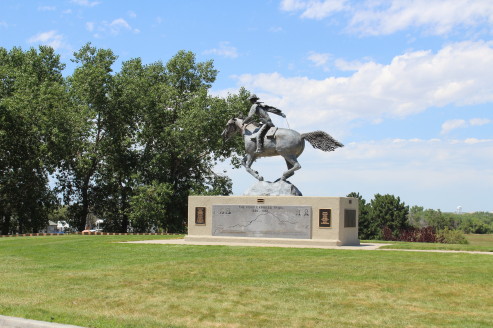
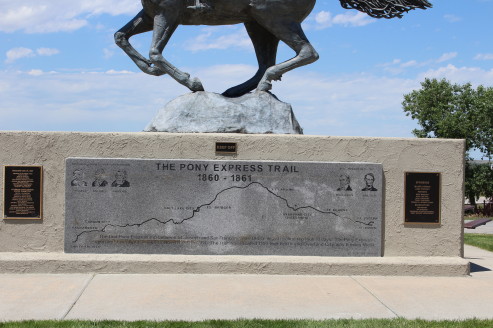
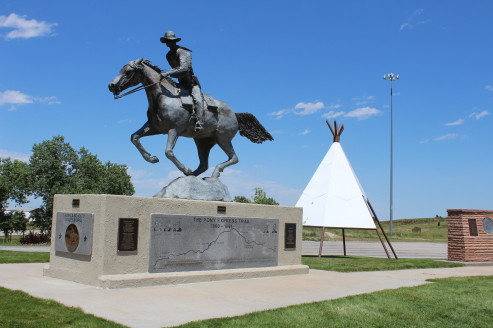
Leaving Julesburg on
I-76, we merged with I-80 at the Nebraska state line. This
was our fourth state so far on this adventure. Tomorrow we
will add another state, Wyoming. Continuing east on I-80 we
crossed into Central Time and arrived at our next and last
city of the day. North Platte, Nebraska.
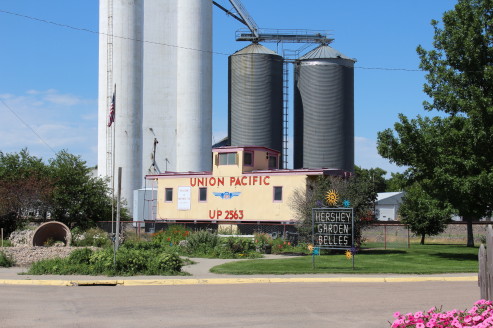
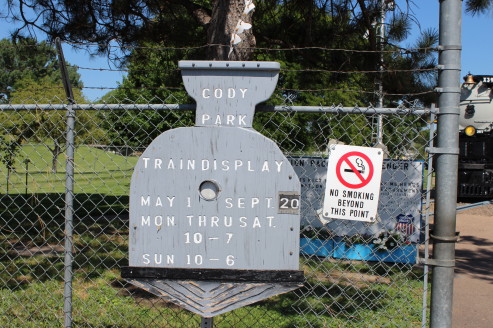
Cody Park is the site of William Frederick "Buffalo Bill"
Cody's first rodeos, the 100-acre park along the North Platte
River offers children's carnival rides and a small zoo as well
as picnic, tennis and swimming facilities. The Railroad Museum
displays train memorabilia and one of the world's largest
steam locomotives.
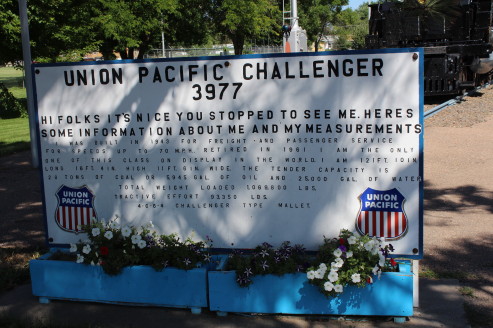
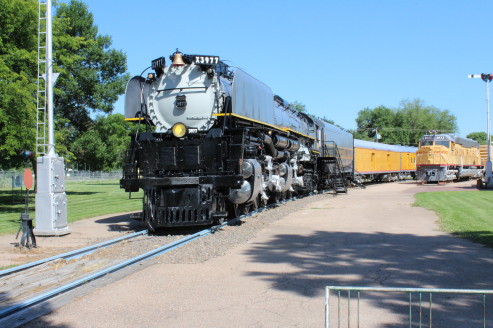
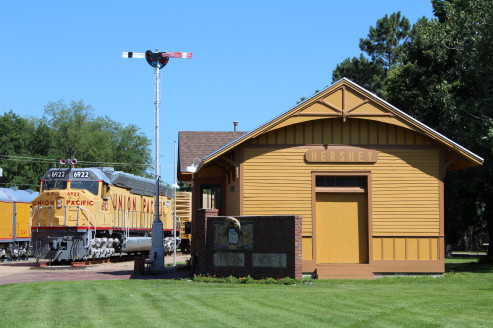
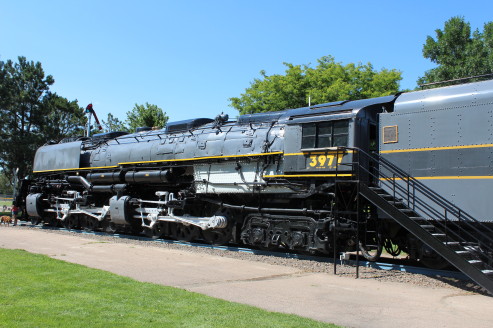

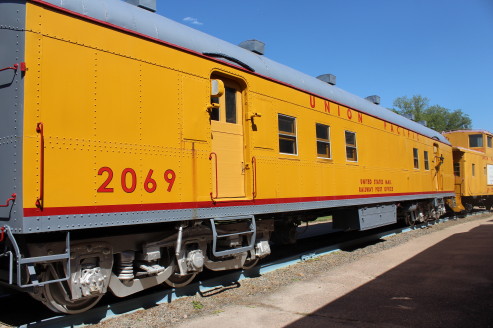
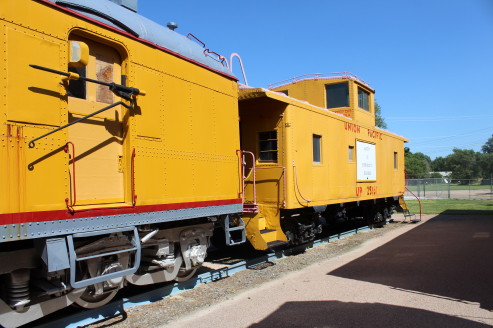
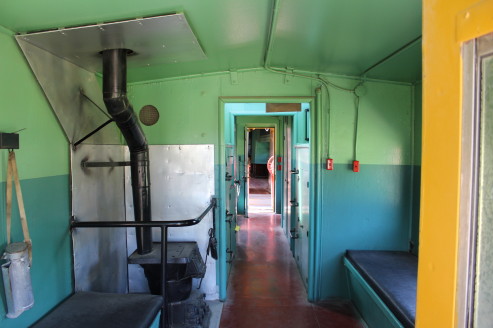
Inside the caboose.
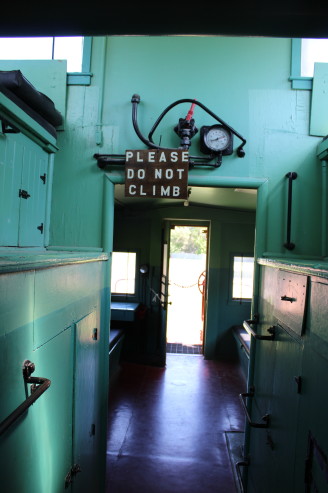
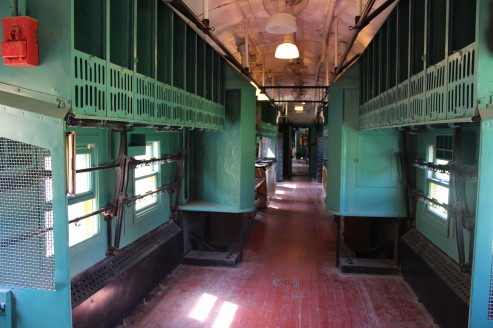
Inside the mail rail car.
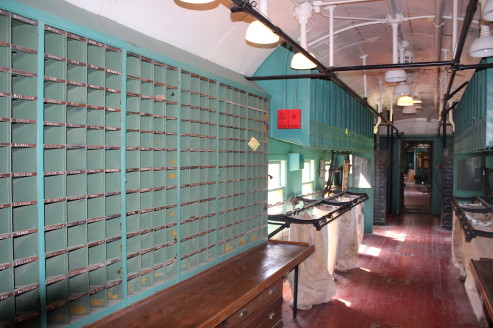
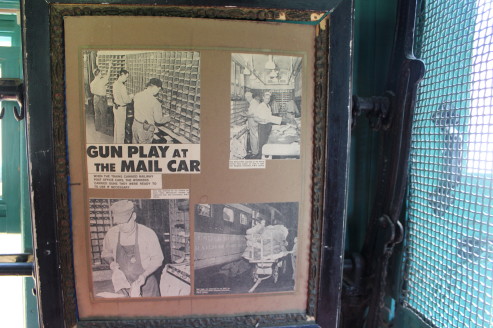
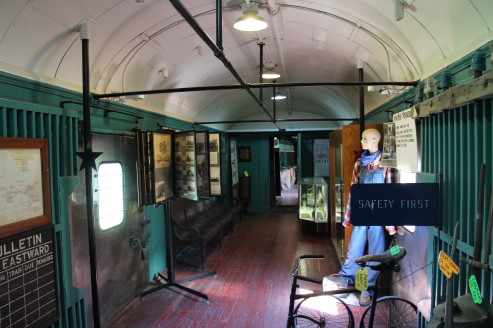
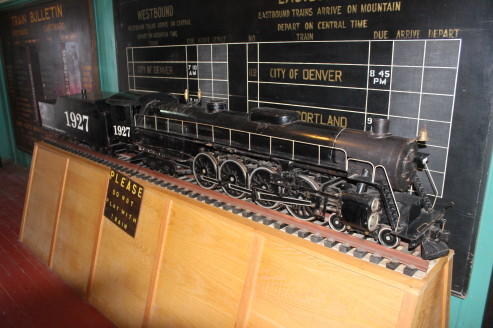

Engineer's side of 3977.
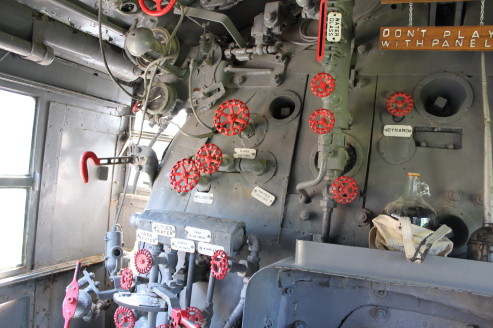
Fireman's side
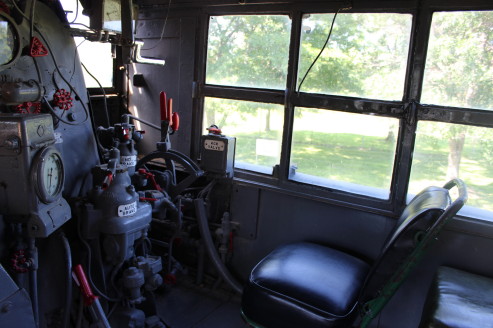
Engineer's seat.
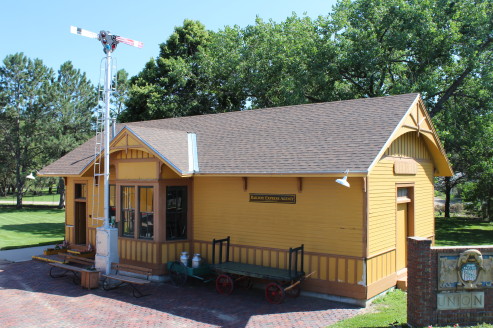
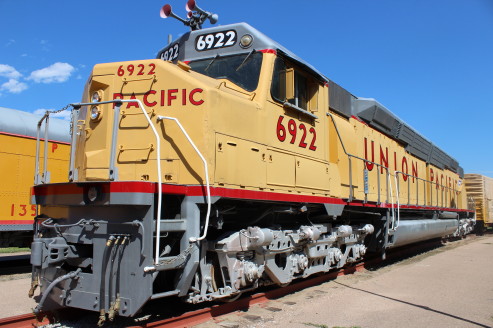
#6922 is one of forty-seven DDA40X diesel-electric locomotives
built for the Union Pacific from 1969 to 1971.
At 98' 5" and weighing 521,980 lbs, the DDA40X is the longest
and most powerful hp rated diesel-electric unit ever built.

From Cody Park we drove several blocks to Memorial Park in
North Platte to see the X480.
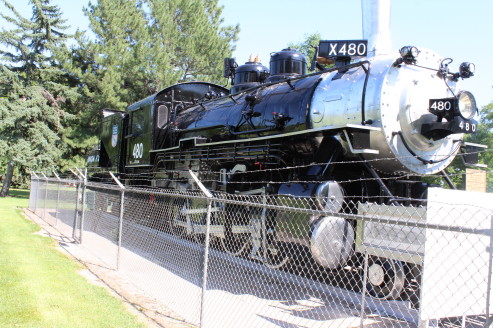
# 480 built for freight service in 1903.
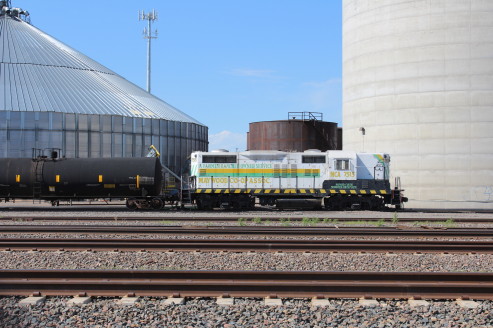
Spotted in the North Platte rail yard.

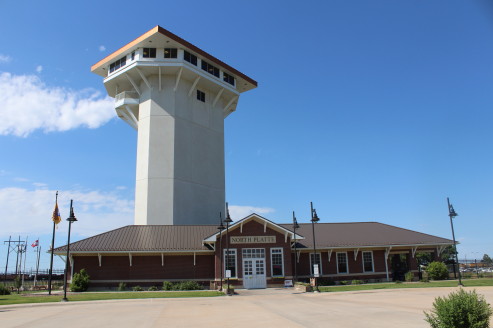
The tower and visitor
center encompass Bailey Yard, the focal point of the Union
Pacific Railroad system and reportedly the largest
classification rail yard in the world. The scope of the
immense 2,850-acre yard can be seen from one of the tower's
two observation levels - the enclosed eighth story offers a
360-degree view of the rail system, while the seventh -story
platform is open-air.
From the deck visitors can see not only
the working yard's 315 miles of track, the switching
facilities and the diesel repair shop but Platte River
Valley as well. As many as 15,000 railroad cars are
processed through the yard daily.
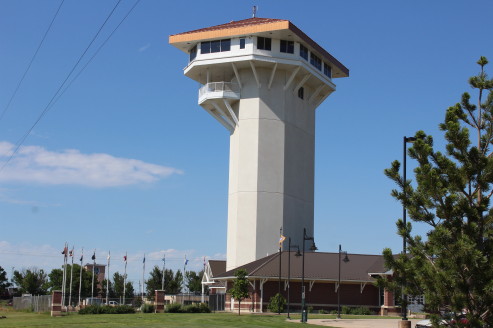
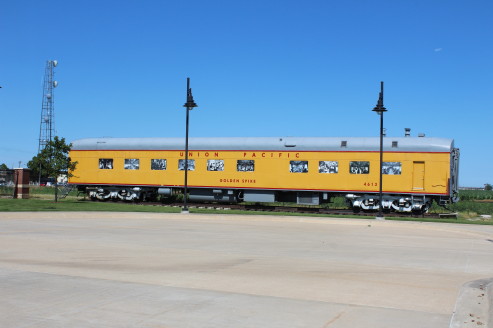
East View.
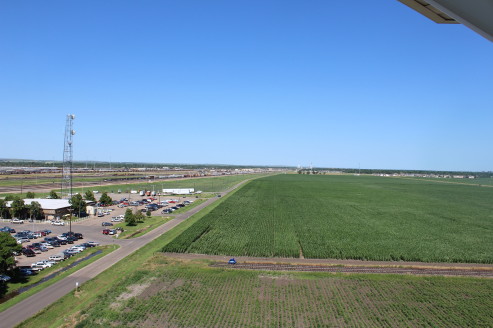
Building on left center
is Bailey Yard Headquarters. This building houses the yard
superintendent and staff who manage the yard. Also working
in this building are terminal train dispatchers, managers,
locomotive managers and train crews. Above the building to
the right is the east departure tracks. This is the train
building yard for eastbound trains to be inspected and
prepared for departure.
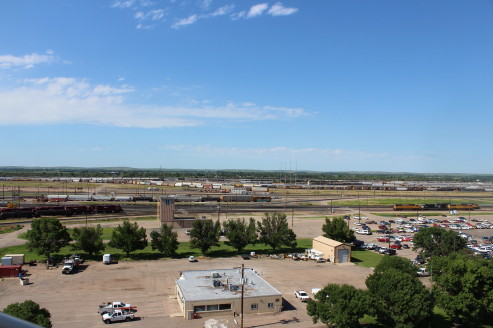
In center, East Route
Tower. This tower houses the yardmaster controlling
eastbound departures and train makeup for departures. In
right background, Westbound Receiving Tracks - these tracks
receive manifest trains and coal trains from the east. And
to right of this is the West Bowl Tracks.This is a 50-track
yard to hold manifest trains headed west.
Basic
Training: A manifest train is made up of mixed rail
cars like boxcars, tank cars, piggyback cars and so on. Bulk
trains are single cargo trains carrying coal, grain, soda
ash and ore. A run-through train is not scheduled to pick up
or drop off any cars at Bailey Yard.
West View
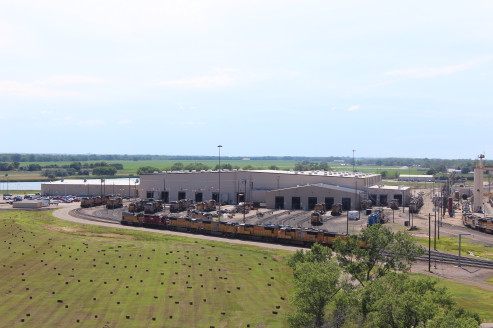
Locomotive Repair Shop.
This repair facility is one of Union Pacific's largest.
Teeming with mechanics, electricians and other skilled
workers, these professionals are able to handle all locomotive
issues from diesel engine overhaul to the changing of light
bulbs. The shop encompasses the same area as three football
fields and with its shop crew, can handle the repair of 750
engines per month. Sand Tower on far right.
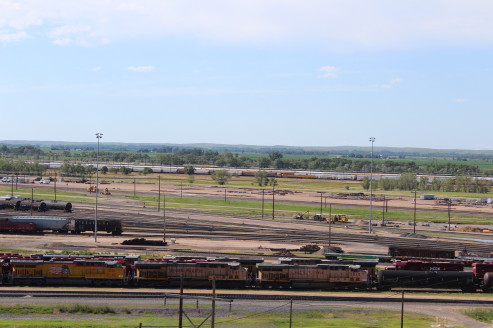
Locomotives throughout Bailey Yard at the ready to do a
variety of services from pulling/pushing trains down the
tracks, to moving rail cars throughout the yard.
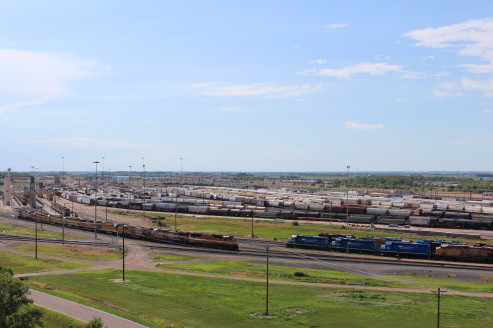
Sand Tower on left edge.
Each locomotive is equipped with sand tanks toward the front
of the engine that are filled with sand from the sand tower.
Sand is the primary source of traction for locomotives
anytime the wheels begin to slip. In front of each wheel,
there's a nozzle that sprays sand on the track with
compressed air. This is an automatic operation each time the
wheels slip or the engineer makes an emergency stop.
Middle center: East Bowl Tracks. Rail cars are sorted onto
the 64 different bowl tracks to be coupled with trains
heading off to different destinations along Union Pacific's
route. Basic Training: Bowl Tracks are called so
because the ground they sit on is actually shaped like a
bowl. With the tracks ending on an incline, it prevents any
of the trains from getting out of the bowl tracks before
they're ready to head out.
Center far background: East Run Through. This facility is
utilized to refuel the engines, top off the fluids and clean
when necessary. Locomotive crews are changed out at this
location as well. In an average day, 300 locomotives are
serviced and sent on their way. All told, Bailey Yard pumps
14-million gallons of diesel fuel each month in locomotives
traveling to destinations throughout the country.
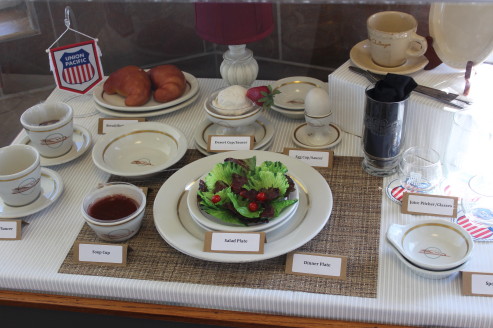

Model of the locomotive repair shop.
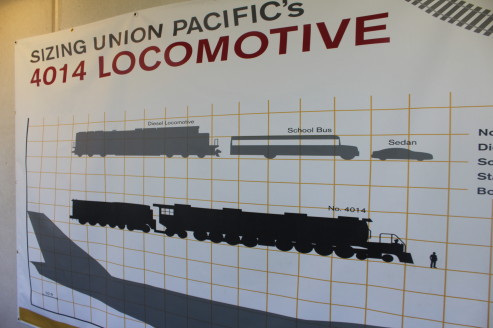
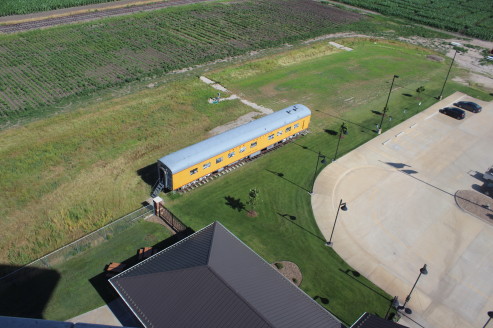
Union Pacific's Bailey Yard is named for former U.P. president
Edd H. Bailey. It's where east meets west on the Union Pacific
line, and where 10,000 cars are handled each day on 2,850
acres of land stretching out eight miles.
After descending from the tower top and while walking through
the gift shop, Chris asked for a good local place to eat. When
I got back to the car I saw I had forgotten to take my
binoculars and telephoto lens with me to the tower top. Too
excited about being here so was not thinking of much. This has
been on my bucket list for a long time.
Latter found us at Applebee's for dinner; one of the recommend
restaurants. From there we checked in at America's Best Value
Inn for tonight's rest.
